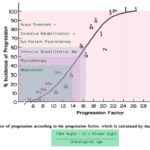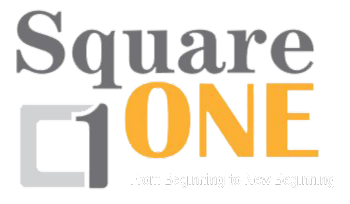Effective Scoliosis Treatment Depends on Individualized Diagnosis
The most appropriate treatment options for scoliosis is when the care is determined in a case-by-case manner. Individualized diagnosis is paramount to effectively treating and managing scoliosis, no exceptions.
Over the past several years that I have treated scoliosis, I found that one of the most frustrating and confusing aspects for a patient or a parent of a child with scoliosis, is understanding how to navigate the many different treatment options available and ultimately feel confident enough to choose the right solution. Many patients are given conflicting opinions on treatment from various health care professions including: watch & wait, physical therapy, bracing and scoliosis specific rehab programs. This often leaves patients and parents of patients feeling unsure of who to trust and how to proceed with care.
I suggest a different approach. First, every scoliosis case is unique and specific recommendations need to be given on a case-by-case basis. Second, there is no need for guess work as the International Society on Scoliosis Orthopedic Rehabilitation & Treatment (SOSORT) has established treatment guidelines for scoliosis based on age, severity of curve and risk of progressions. These guidelines should be used to assess each scoliosis case and determine the most appropriate treatments options. Also, there are a variety of causes of scoliosis, we are primarily talking about treatment for idiopathic scoliosis here. These guidelines may also apply to other forms of scoliosis.

Progressive Scoliosis Treatment
A Couple Of Key Points To Understand About Scoliosis:
- Scoliosis is defined as a lateral bending of the spine of 10° or greater with rotation.
- Curve angles are measured by using Cobb angle, which is the measure of the most superior and inferior vertebra with the greatest lateral bending.
- Risser sign is a measurement of skeletal maturity and if the growth plates have begun to close. It’s a predictor of how much growth an individual has left. Risser zero means the growth plates have not begun to close and there is more growth expected. At Risser 5 the growth plates have closed and skeletal maturity is reached. Scoliosis curves have the greatest risk of progress during growth spurts and the Risser sign helps to distinguish the likelihood of curve progression.
Progressive Treatment Options for Scoliosis:
- Physical therapy: Physical therapy for scoliosis is not just general exercises but rather scoliosis specific rehab and application of such rehab must be administered by a health care professional with training in scoliosis specific rehab whether it be a chiropractor or physical therapist. Physical therapy for scoliosis is generally performed in the clinic along with home rehab for 3-7 sessions per week for 3 months. After 3 months exercises every 2 weeks may be sufficient.
- Scoliosis Intensive Rehabilitation (SIR): SIR has been shown to be effective in treating scoliosis where available and may also be a great option for patients traveling longer distances. SIR involves a 3-5 week program with 4-6 hours of treatment per day.
- Brace treatment is a 3rd option and has been found to be the most effective treatment for preventing curve progression and thus preventing surgery and frequently improving scoliosis curves. Brace treatment is usually used in conjunction with a scoliosis specific rehab program.
Progressive Scoliosis Treatment Guidelines:
1. Children (no signs of maturity)
a. <15° Cobb: Observe every 6-12 months.
b. Cobb angle 15-20°: Scoliosis specific exercise program with home rehab programs. Part-time scoliosis brace if curves do not improve.
c. Cobb angle 20-25°: Scoliosis specific exercise program, scoliosis intensive rehabilitation program where available.
d. Cobb angle >25°: Scoliosis specific exercise program, scoliosis intensive rehabilitation program and part-time brace wear.
Risk Of Progression
Progression Risk Factor = [ Cobb Angle – (3 x Risser sign)] / Chronological age.
II. Children and adolescents, Risser 0-3: These recommendations are based on progression risk rather than curve angle alone. (see above chart)
a. Progression risk less than 40%: Observation every 3 months.
b. Progression risk 40%: Scoliosis specific exercise.
c. Progression risk 50%: Scoliosis specific exercise and scoliosis intensive rehabilitation program.
d. Progression risk 60%: Scoliosis specific exercises, scoliosis intensive rehabilitation program + part-time brace.
e. Progression risk 80%: Scoliosis specific exercises, scoliosis intensive rehabilitation program and full-time brace.
III. Children and adolescents with Risser 4
a. <20° Cobb: Observation every 6 months.
b. <20-25° Cobb: Scoliosis specific exercise.
c. >25° Cobb: Scoliosis specific exercise, scoliosis intensive rehabilitation program.
d. >35° Cobb: Scoliosis specific exercise, scoliosis intensive rehabilitation program + brace.
IV. First presentation with Risser 4-5
a. >25° Cobb: Scoliosis specific exercise
b. >30° Cobb: Scoliosis specific exercise, scoliosis intensive rehabilitation program.
Adults with Cobb angels >30°
Scoliosis specific exercise and scoliosis intensive rehabilitation program.
VI. Adolescents and adults with scoliosis (of any degree) and chronic pain.
Scoliosis specific exercises, scoliosis intensive rehabilitation program and brace treatment.
At Square ONE all of our scoliosis treatments follow guidelines set by SOSORT. Our treatments include a combination of Chiropractic BioPhysics, Scientific Exercises Approach to Scoliosis (SEAS), Scoliosis Intensive Rehabilitation and Scolibrace.
Click here to learn more about scoliosis treatments.
Click here to learn more about Square ONE.
For a FREE consultation call 970-207-4463
